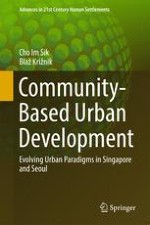2017 | OriginalPaper | Chapter
3. Singapore and Seoul as Neo-Developmental Cities
Authors : Cho Im Sik, Blaž Križnik
Published in: Community-Based Urban Development
Publisher: Springer Singapore
Activate our intelligent search to find suitable subject content or patents.
Select sections of text to find matching patents with Artificial Intelligence. powered by
Select sections of text to find additional relevant content using AI-assisted search. powered by
